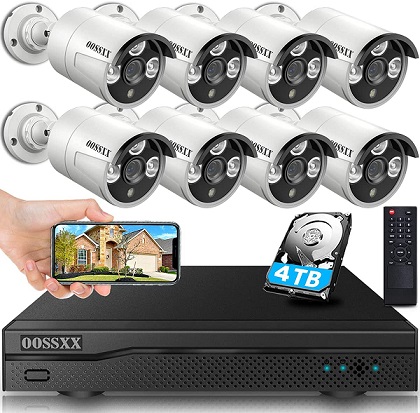
However, with Lorex, this major problem is avoided. This is usually what takes the most time when installing home security systems. With Lorex, there is no need to restructure the current wiring system you have in the house. Seriously, in most of the reviews, people mention how easy it is to mount them with just a few basic tools you probably already have. The other advantage to this is that would-be criminals can’t break Lorex cameras so easily! There are simply no wires to pull out.
#Fluoreon vs lorex camera systems install#
The average homeowner should be able to install them by themselves. The lack of wires and cables also makes installation far easier. You won’t have any messy wiring visible on the outside. This is advantageous when it comes to the physical appearance of your house. Instead of tons of cable, most Lorex systems rely on an Internet connection. They work without Wi-Fi, so make a good option if you’re going for a low-tech home security solution. You can also refer to them later if necessary because of a security breach. You can access the recordings online in real-time. What Lorex does do is monitor what’s going on around your home or business, and then record it. There is no monthly fee or monitoring with Lorex as with some other security companies. There are still some systems that use wires, but wired systems are too easy for a criminal to disable and we don’t generally recommend them for most people for that reason. Most of the security camera systems offered by Lorex do not make use of wires or cables. Keep trying out various combinations until you’re satisfied with the trigger level.Advantages Of Lorex Security Camera SystemsĪpart from the company’s great experience and expertise in wireless technology, you know you’re getting good quality by choosing Lorex. The best thing you can do is work out a configuration for each camera based specifically on what your cameras are likely to register as motion and customize your settings to your preference. The problem is simply that everyone’s cameras will be looking at such drastically different scenes, that one person can have false positives on a very low sensitivity (for example due to snow) whereas the other can use the same settings and not even catch the movements of trees in the wind. There is no clear cut answer to sensitivity/threshold settings that can truly eliminate false positives, while maintaining that they trigger as desired, for all cases. But if, for some reason, one of these people starts dancing or attacking another person, the degree of movement and activity would trip the threshold meter. People don’t want every person walking in and out to trigger the alarm. A practical application of this would be, for example, a check out line in a grocery store. This feature exists to give users complete control and the ability to both fine tune and customize their motion detection settings. The trick is to find a proper balance based on all the factors that stand to stimulate your motion detection sensors and doing your own personal testing. Alternatively, if you set your sensitivity to 100 and your threshold to 1 or 0, this means that the slightest change could set off the trigger. (Photo credit: Dahua).īased on the above definition, if you set your sensitivity to 1 and threshold to 100, it would be practically impossible to trigger a motion alert.

An example: Sensitivity and Threshold in Dahua security systems. Another way to think of these settings: for however long there is enough change to satisfy the sensitivity parameter, a threshold meter is silently being filled up until it hits the trigger point. Think about it this way: sensitivity is a measurement of the amount of change in a camera’s field of view that qualifies as potential motion detection, and threshold is how much of that motion needs to occur in order to actually trigger the alarm. It is recommended to select a Threshold between 10~50. If the amount of motion exceeds the threshold, an event occurs. Threshold determines how much motion is required to trigger an event.It is recommended to select a Sensitivity between 30~70. For example, if the sensitivity is high, small amounts of motion are more likely to trigger an event. Sensitivity determines how sensitive the camera is to motion.What sensitivity and threshold mean in security cameras? What’s their relationship and what are the best settings?

Sensitivity and Threshold are settings found on the motion detection section of security camera systems.


 0 kommentar(er)
0 kommentar(er)
